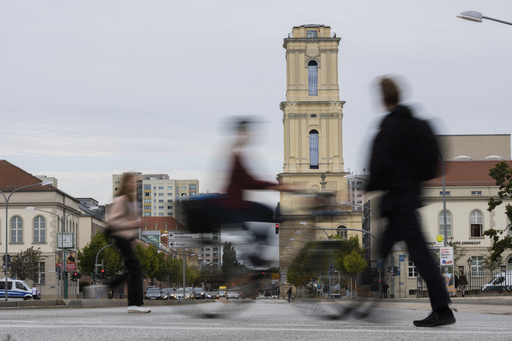
Germany’s president recently inaugurated the reconstructed tower of a church known for its association with the rise of the Nazis and subsequent demolition under communist rule. President Frank-Walter Steinmeier emphasized the significance of this event as a chance to reflect on Germany’s complex past, especially in the midst of a rise in authoritarian and antidemocratic sentiments.
The Garrison Church’s baroque tower, now rebuilt with a viewing platform 57 meters above street level, stands prominently in Potsdam near Berlin. This historical site was where Adolf Hitler attended the opening of parliament in 1933 after becoming chancellor, symbolizing the alliance between the new Nazi regime and conservative traditionalists in Germany.
Originally built in the 1730s to serve the Prussian royal court and the military, the church suffered severe damage during World War II and was later demolished in 1968. Plans to reconstruct the church faced opposition but eventually moved forward with support from a foundation backed by the Protestant church.
While some critics view the church as a symbol of militarism, far-right groups, and opposition movements, backers aim to counter these views by offering a critical look at the site’s history through exhibitions and inscriptions promoting peace. The regional Protestant bishop pledged to uphold democratic values and ensure that anti-democratic forces find no haven at the rebuilt tower.
The president highlighted the ongoing debates surrounding the project and its historical significance, emphasizing the need to learn from the past and address contemporary issues such as the resurgence of far-right movements in Germany. He urged the public to use the rebuilt Garrison Church as a place for historical reflection, critical thinking, and discussions on dealing with Germany’s complex history.
The reconstruction project, costing approximately 42 million euros, received significant funding from the federal government. The tower, now open to the public, stands next to a former communist-era data processing center serving as an artist workspace. Despite the reconstruction, there are no plans to rebuild the nave of the church.
Potsdam, known for its historical sites like Sanssouci Palace and Cecilienhof Palace, remains a significant location for reflecting on Germany’s past, including the lessons learned from the country’s turbulent history.
